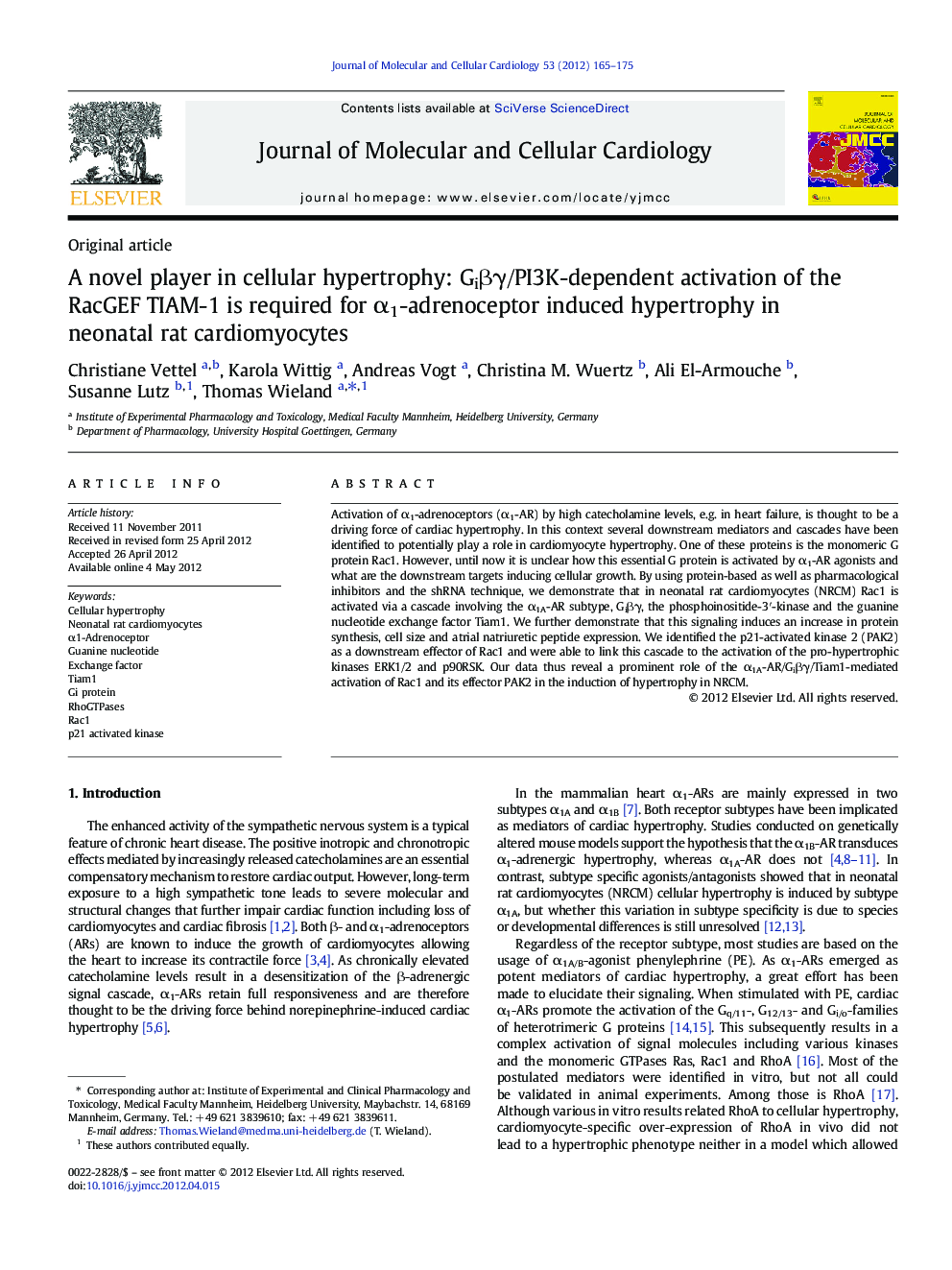| Article ID | Journal | Published Year | Pages | File Type |
|---|---|---|---|---|
| 2190614 | Journal of Molecular and Cellular Cardiology | 2012 | 11 Pages |
Activation of α1-adrenoceptors (α1-AR) by high catecholamine levels, e.g. in heart failure, is thought to be a driving force of cardiac hypertrophy. In this context several downstream mediators and cascades have been identified to potentially play a role in cardiomyocyte hypertrophy. One of these proteins is the monomeric G protein Rac1. However, until now it is unclear how this essential G protein is activated by α1-AR agonists and what are the downstream targets inducing cellular growth. By using protein-based as well as pharmacological inhibitors and the shRNA technique, we demonstrate that in neonatal rat cardiomyocytes (NRCM) Rac1 is activated via a cascade involving the α1A-AR subtype, Giβγ, the phosphoinositide-3′-kinase and the guanine nucleotide exchange factor Tiam1. We further demonstrate that this signaling induces an increase in protein synthesis, cell size and atrial natriuretic peptide expression. We identified the p21-activated kinase 2 (PAK2) as a downstream effector of Rac1 and were able to link this cascade to the activation of the pro-hypertrophic kinases ERK1/2 and p90RSK. Our data thus reveal a prominent role of the α1A-AR/Giβγ/Tiam1-mediated activation of Rac1 and its effector PAK2 in the induction of hypertrophy in NRCM.
► Tiam1 is required for α1-adrenoceptor induced neonatal rat cardiomyocyte hypertrophy. ► A Giβγ/PI3K/Tiam1 dependent pathway mediates α1-adrenoceptor-induced Rac1 activation. ► Rac1-GTP induces the phosphorylation of PAK2, ERK1/2 and RSK ► PAK2 activity contributes to α1-adrenoceptor-induced cellular hypertrophy.
